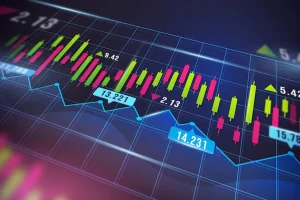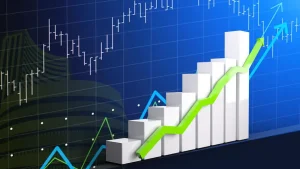
Long-term investors have many motivations for considering climate change when making long-term investment decisions. Beyond physical risks from rising sea levels and storms affecting real estate, businesses, or regions, many want to support climate solutions by purchasing shares of companies working towards decreasing carbon emissions.
Investors need to establish guidelines that allow them to assess the materiality of climate risks and position their portfolios appropriately. This may involve conducting studies on indirect physical climate impacts; engaging investee companies on business model decarbonisation initiatives and using derivative instruments for risk hedging purposes.
1. Increased Volatility
Investors trade an estimated $250 trillion worth of stocks, bonds and long-term investments each year on global capital markets. An increasing number of them are looking for ways to include or exclude businesses that contribute to climate change from their portfolios; sometimes for financial considerations; sometimes moral ones – in support of companies which help reduce risks related to climate change or mitigate its impacts.
Physical climate risks can wreak havoc with portfolio companies’ business value chains from raw material supply to end user demand. A grain processing plant could experience flooding that affects its operating capacity; indirectly physical climate risks like storms and droughts can reduce asset values while increasing costs for companies.
Investors can evaluate these risks and opportunities using various tools, from reporting frameworks such as the Task Force on Climate-related Financial Disclosures to scenario analysis and stress testing. Furthermore, investors can make use of low-carbon index products, derivatives and active managers that incorporate climate risk considerations into their due diligence and monitoring processes.
2. Lower Long-Term Returns
Investors concerned with climate change face a unique challenge when aligning their portfolios with environmental, social, and financial objectives. They must carefully consider risks and opportunities associated with transitioning to a low-carbon economy at various levels – portfolio, sector, asset class and security level while including climate risk in their broader risk assessment process.
As much as emissions reduction may increase global economic growth, climate-related impacts could reduce long-term returns from investments. For instance, biodiversity loss can have severe ramifications on economic development through changes to water availability and soil quality as well as reduced food production due to declining species.
Climate policies, regulations and legal rulings could render certain assets obsolete in the future (known as “stranded asset risk”) such as oil, gas, coal and copper ores – including their exposure and their prices – thus increasing stranded asset risk. Strategies which exclude or reduce such exposures could help lower that risk.
3. Increased Risk of Stranded Assets
As we transition towards a low-carbon economy, some assets will become stranded. This is particularly the case for investments made into companies that extract, distribute or rely heavily on fossil fuels. Estimates indicate that humanity’s carbon budget – the amount of emissions we can safely emit according to science – requires significant parts of fossil reserves remain underground with potentially trillions worth of assets being at stake (McGlade and Ekins 2015; Semieniuk et al 2022).
Climate-induced obsolescence is an inevitable part of capitalist economies, yet when driven by climate change it poses serious threats to destabilize financial markets and threaten pension funds and government finances9. As a result, this increased risk is driving the divestment movement, where investors pressure companies to consider their exposure to climate-related risks before divesting from them; furthermore they advocate for policies which facilitate accurate pricing through reporting frameworks such as TCFD.
4. Increased Uncertainty
Climate change’s physical impacts can seriously impede business operations and supply chains, creating direct costs such as damaged infrastructure (like that caused by flooding) as well as indirect ones ( such as lost revenue from production disruption) that can have long-term financial repercussions for investors and companies alike.
Investors also face uncertainty associated with stranded assets. This means resources could become inaccessible due to regulations, legal rulings or technology displacement – potentially diminishing investment returns and decreasing returns for investments.
Investors have created playbooks to protect themselves against risks and capitalize on opportunities amidst this ever-increasing uncertainty. For example, they assess carbon intensity of investments; engage investee companies on transitioning toward lower carbon strategies; support public policies which enable accurate pricing of climate risk; and shift their own capital toward lower-carbon investments – these steps all combined can ensure long-term portfolio resilience.








